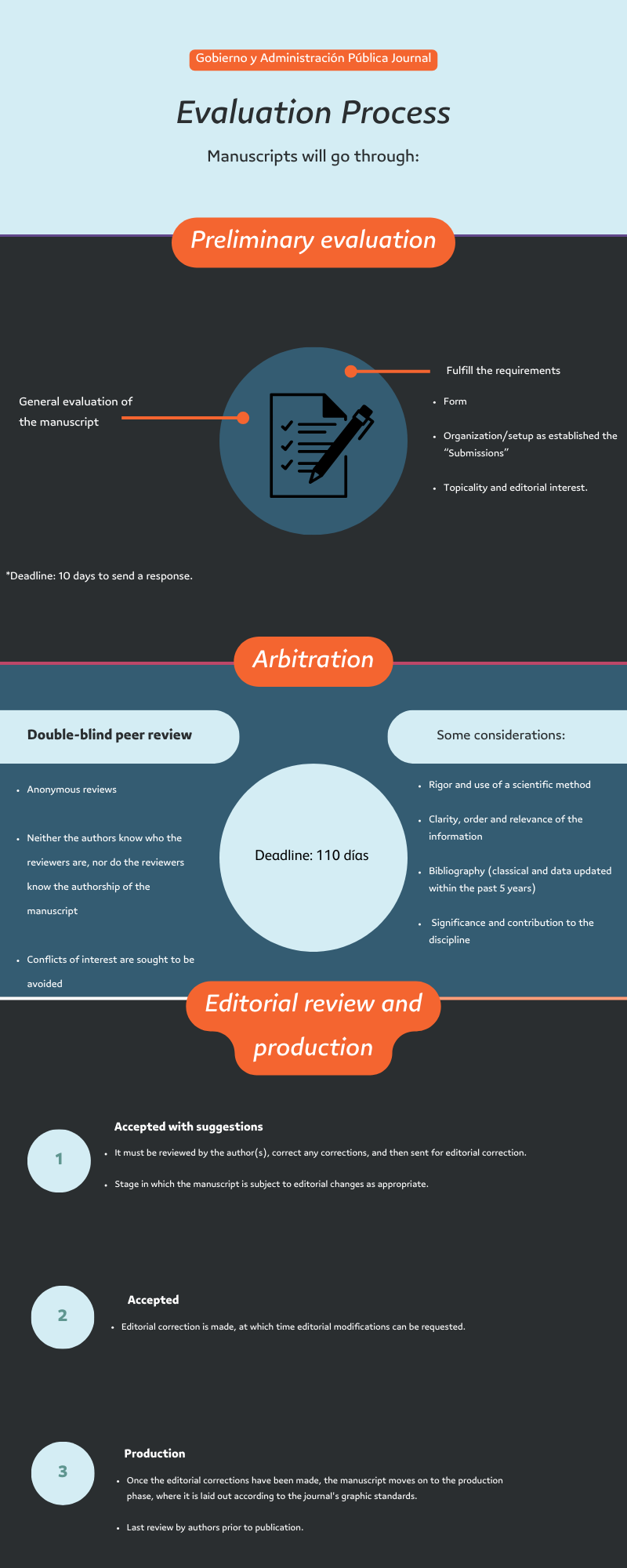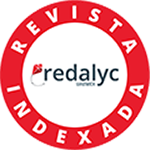Evaluation
Evaluation Process
The documents submitted will go through the following evaluation process:
1. Preliminary evaluation: This includes a general evaluation of the manuscript for the proposed section, where compliance with requirements of form, organization, timeliness and editorial interest are verified. The result of this evaluation may be the rejection of the manuscript, or it may go on to the arbitration process. Any decision is communicated to the corresponding author. The maximum time limit for this stage is 10 days.
2. Refereeing: The manuscript is assigned to external peer reviewers under a double-blind system. Peers will have no knowledge of the authorship of the manuscript and will ensure that they have no relationship with the author(s) or the institution(s) to which they belong.
The peer reviewers' verdict may be a) rejection, b) acceptance with suggestions, or c) acceptance. In case of controversy due to disagreement between the opinion of the peers, a third peer reviewer is requested. In case of persistent controversy of verdicts, the Editorial Committee will be the one to define the acceptance or rejection of the manuscript.
Any decision is communicated to the author(s). In cases of acceptance with suggestions or acceptance, the undersigned correspondent receives a minute that includes the suggestions indicated by the reviewers and/or the editor. The maximum term for this stage is 110 days.
The peer reviewers will take into consideration the following items for their verdict.
a) Rigor and use of the scientific method;
b) Clarity, order and pertinence in the presentation of the information (presentation of the problem, hypothesis, methodology, results, etc.);
c) Relevant bibliography, both classical and updated antecedents (with a maximum range of 5 years);
d) Transcendence and contribution of the work to the discipline.
Also, it will be evaluated:
- Summary: Briefly includes the main aspects such as topic, antecedents, objectives, methodology, results, and conclusions.
- Theoretical Framework: Exhaustive, appropriate, and up-to-date bibliographic references, using theories and concepts corresponding to the topic addressed.
- Methodological Framework: Appropriate production method and clear and precise explanation of the information collection techniques used.
- Discussion of results: Clear, trustworthy results consistent with the methodology; in-depth interpretation of the data; consideration of other relevant research on the topic; findings contribute to the discipline.
- Conclusions: Includes the main findings, weaknesses, and projections of the research conducted.
3. Editorial review and production: If accepted or accepted with suggestions, the manuscript will go through the stage of review, adjustments, and corrections by the editor and co-editor(s). They check that the required corrections have been made.
The manuscript may be returned for further editorial modifications, so new changes may be requested when required.
When the editorial observations are corrected, the manuscript goes to the production phase, where it is plotted according to the journal's graphic standards. A final copy is sent to the author(s) for final approval prior to publication of the issue.










